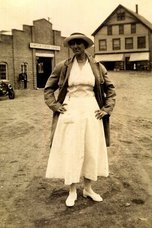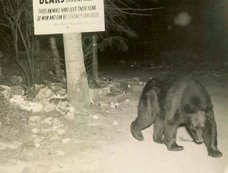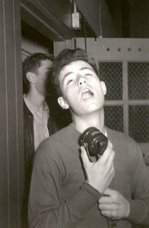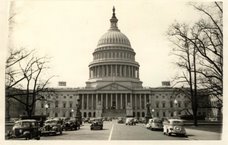The 110' tall Thomas Hill Standpipe is said to be one of the noticeable landmarks about the 'Queen City' -- apparently shouldn't be missed. I doubt, though, that Yusuf Islam (aka Cat Stevens) got to check that out when he last visited Bangor, Maine.
With more than average curiosity why international flights bound for U.S. airports with alleged or potential terrorists on board are diverted to Bangor, Maine [BGR in airport code], I finally decided I had to understand more about this historic lumber-jack community and how it got the 'honor' of this selection. Beyond geography and history, would Bangor become a part of American pop culture -- a verb, if not a song? You know:
"To-Bangor: to be displaced or diverted to an alternative site far removed from the original destination in the interest of national security."
When did any of you non-Bangorites stop and give BGR a second thought? The airport according to its proud website specifications has the widest runway on the east coast. And if ever needed it is an alternate landing facility for the Space Shuttle. Yet in all of my years of travel, how have I missed Bangor, Maine? Why has this been kept from me?
I think that if we all knew more about Bangor, we would be on our way to understanding more of the rich, bizarre, and creative minds behind characters that appear in novels like those of Stephen King. Yeah, he lives in Bangor too.
I didn't even know about their annual Folk Festival. It seems like such a tourist attraction compared to the old Penobscot River and the Paul Bunyan statue. Old Bunyan. . .well, logging and the paper mills were part of the heritage of this area and still are. Even Congressman Michaud worked at the paper mills and still carries a union card like his ancestors did.
The history of a place is largely lost on passengers who only land and change planes like at BGR. Gosh, so much is out there that they are missing. I bet even 'Cat' wished deep down that he could have had a chance to glance at the stream that gave Thoreau such prosaic reflection. [TIC*] * tongue-in-cheeck
But perhaps one of the most remarkable legacies of Bangor resides right at the airport itself, where this little story started, but not with the passengers whose names appear on the 'No-Fly' lists. No, the truly extraordinary story of a community like Bangor comes to a head around the energy of a volunteer group at the airport called, the "Maine Troop Greeters."
If there ever was a competition among volunteer organizations around the country who could only be recognized for their good works by non-vested, long-distance observers, I'd have to say that the Maine Troop Greeters deserve some sort of High Praise & Recognition Award. At a minimum communities across the country should model their own airports' programs around the initiative of what this group of unsung heroes has accomplished at BGR.
The Maine Troop Greeters began their efforts back in 1991 during the Gulf War. Using veterans (including WWII, Korea & Vietnam) and civilians, they decided that troops and their families (if they were there too) should be shown appreciation, support and comfort by personal, heartfelt greetings when they arrived at Bangor. To that end they have provided the human connection no matter the time of day or night, coffee and snacks, and the all-important cellular phones for communications with loved ones. Newspapers, display cases, maps, reading areas, and relaxation space are all dutifully attended and made 'homey' in the confines of a small, international airport.
For some of the troops, it was their last point before departing the U.S. mainland for an uncertain future abroad, possibly in harm's way. For the reverse traffic, it is often the first stop upon entering U.S. soil and the return to a welcoming nation. Whichever direction they're going, it's the spirit of what's happening by the good works of the generous Maine Troop Greeters that make lasting positive memories. http://www.mainetroopgreeters.com
This all leads me to believe that it's too bad that the 'No-Fly' people are taken to such a nice place as Bangor even if BGR is well-equipped to deal with possible terrorists by their staff and particularistic geographic resources.
I'd like nothing better than the good works of the Maine Troop Greeters be replicated by other airports which have high volume of military traffic and which similarly don't have USO facilities to fill the need. I've been in such airports where nothing exists. I've seen how dismal the long waiting periods can be for troops who are so eager to get home, who are tired, and hungry, and just need a little space out of the normal fray of the airport havoc.
And I think because of all of this, I am more motivated than ever to visit Maine, you know as a real tourist too. It's a long haul for me, living in the West, but I'd kind of like to see the old Standpipe, the Paul Bunyan statue, check out Thoreau's stream, and maybe even catch a day at the Folk Festival in August.
But mostly -- I want to fly into BGR and talk with those Greeters and observe a 'day in the life' of those devoted volunteers. They inspire me.
You too?



